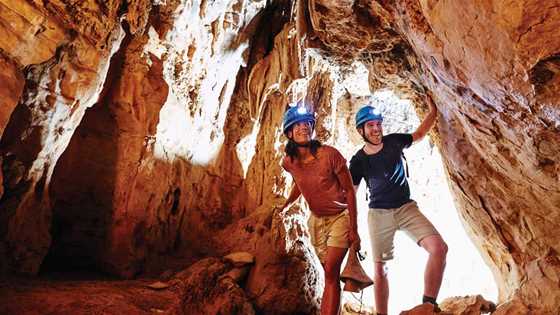From old, dusty-relic collector to young, multi-skilled arts producer – the word ‘curator’ has many definitions. We find out what it really means in today's art world.
Did you know that the word curator derives from the Latin word curare, which simply means 'to care'?
This is Gemma Weston's favourite fact about being a curator, a job title that, in the 21st century, has become as ambiguous as Mona Lisa's eyebrows.
"I think we've really hit 'peak curating', where the word is used so much that
it means something entirely different from what it did even 10 years ago,"
she says. "The tech industry has really taken to it – Apple and Samsung are curating playlists, Google refers to itself as 'curating' search results – and every group exhibition seems to have to have a curator almost by default."
Fellow West Australian curator Andrew Varano says this makes defining the profession within the context of the arts that extra bit harder.
"Traditionally curators were involved in the care and maintenance of museum collections, and with directing the building of collections, so the role was devoted to preserving and building cultural heritage and researching the provenance and history of objects," he says. "With the advent of contemporary art in the late 20th century, the role of the curator changed to provide a bridge between artists and institutions, and to organise exhibitions of contemporary art – works often made for the exhibition rather than drawn from a historical collection."

FROM LEFT Andrew Varano and Gemma Weston, with OK Gallery's Jamie Macchius.
Andrew says that, in popular culture today, the word is often used as a more highbrow-sounding synonym for 'selecting' or 'choosing', with menus 'curated' by chefs, or stores with 'curated' lines of products.
"But this is problematic because it oversimplifies what curating is," he says.
"It gets even more difficult because artists often organise exhibitions themselves – with their friends, or with artists that they'd like to work with – so artists often perform curatorial work even though they may or may not see it or describe it in this way."
So what exactly does a curator do, and who becomes one?
"In terms of working with an art collection, it's a kind of custodial role," Gemma explains. "A lot of record-keeping, making sure that the works are represented properly if they're reproduced in print, working with a registrar to organise framing and conservation, and also guiding how the public access the collection, which can mean anything from writing texts and labels to organising exhibitions and giving lectures, proposing acquisitions based on policy, managing donations, and a lot of research."
Working on freelance projects is slightly different again.
"That role combines a lot of coordination and project-management skills, installation of works, development of a curatorial thesis and, of course, consulting with artists," Gemma says. "Each project has its own challenges and requirements depending on the kinds of artworks and exhibition spaces you're working with."
Gemma and Andrew, like many others, took to the profession after studying arts.
"I went to art school at Curtin University and I fell into curating after that, simply by organising exhibitions with the peer group I'd developed," Gemma says. "We were lucky to have built a supportive and ambitious network – curating was a way of keeping those connections going, and I found it offered something quite different but quite complementary to making art."

Unlike Gemma and Andrew, Here&Now 2016 exhibition curator Hamida Novakovich doesn't have a background in art, and didn't study it straight away.
"My experience of curating in Perth is probably very different to a lot of other curators, because my work and passion has always been in grassroots community work with Muslim communities," she says. "That is how I became a curator – through work and studies."
Hamida studied anthropology before becoming an assistant curator at the Berndt Museum of Anthropology. She started researching Muslim artists and Islamic art around the world for her honours, and has since produced a number of exhibitions focusing on young Australian-Muslim artists.
Outside of the arts world, Hamida says curating is not a commonly known profession. "The fact that many people don't know what curating is reaffirms two things for me: it's a highly specialised profession, or perceived as elitist," she says. "I think curating needs more attention in the 21st century.
I know for a fact that there are no solid courses people can do in curating
so, as with a lot of curating, it's a fancy title for some kind of volunteer position when you first start out."

Visitors engaging with the Look. Look Again exhibition and (above) at the
Lawrence Wilson Art Gallery.
Given that she feels the field is actually really important, Hamida says not
having courses readily available in Western Australia reflects the current value of the arts in our community.
"We need to place more importance on cultural and artistic development in general, and curators can often be important bridging agents between multiple parties," she says. "We also need highly educated, professional, but also grassroots and innovative curators who engage with artists who may be 'hard to reach'. My vision is that curating is a field students can enroll in and practise just like I've had the chance to with my studies. It's an exciting challenge!"








